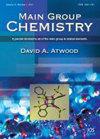绿色合成纳米CuO纳米颗粒的研究:用马来籽提取物光催化和声催化降解活性染料和有机化合物
IF 1
4区 化学
Q3 CHEMISTRY, MULTIDISCIPLINARY
引用次数: 0
摘要
本研究旨在评估光催化和声催化工艺在氧化铜纳米颗粒(CuO NPs)存在下去除纺织废水中活性蓝5染料和有机化合物的有效性。以槟榔籽提取物为原料合成了CuO NPs。通过SEM、TEM、XRD、EDX和FTIR等技术对NPs的结构进行了表征。该试验在间歇式系统中进行,以评估影响染料去除效率的因素,包括接触时间、pH、NPs用量和初始染料浓度。实验结果表明,光催化降解率(98.42%)高于声催化降解率(76.16%)。然而,在黑暗条件下(没有紫外线或美国波),染料去除效率不显著。在光催化和声催化条件下,CuO NPs浓度为0.15 g、染料浓度为40和60 mg/L时,活性蓝5染料的去除率最高。光催化和声催化过程的动力学数据均符合准二阶模型,相关系数均大于0.99。等温研究表明,Langmuir模型是描述CuO纳米粒子在黑暗条件下吸附行为的最佳等温模型。气相色谱-质谱分析结果表明,光催化工艺对有机化合物的降解效率可达87%以上。本文章由计算机程序翻译,如有差异,请以英文原文为准。
Green synthesis of CuO nanoparticles using Peganum harmala extract for photocatalytic and sonocatalytic degradation of reactive dye and organic compounds
The present study was performed to evaluate the effectiveness of photocatalytic and sonocatalytic processes for the removal of reactive blue 5 dye and organic compounds of textile effluent in the presence of copper oxide nanoparticles (CuO NPs). CuO NPs were synthesized using Peganum harmala seed extract. The structure of NPs was confirmed using SEM, TEM, XRD, EDX, and FTIR techniques. The tests were carried out in a batch system to assess factors affecting the dye removal efficiency, including contact time, pH, NPs dosage, and initial dye concentration. The experimental results showed that the photocatalytic process (98.42%) produced a higher degradation percentage than the sonocatalytic process (76.16%). While, the dye removal efficiency was not significant in the dark conditions (without UV or US waves). The maximum removal of reactive blue 5 dye under photocatalytic and sonocatalytic conditions occurred at the presence of 0.15 g of CuO NPs and dye concentration of 40 and 60 mg/L, respectively. The kinetic data followed a pseudo-second-order model in both photocatalytic and sonocatalytic processes with a correlation coefficient higher than 0.99. Isotherm studies showed that the Langmuir model was the best isothermal model to describe the adsorptive behavior of CuO NPs in a dark condition. The results obtained from GC-MS showed that the photocatalytic process had a degradation efficiency of over 87% in the removal of organic compounds.
求助全文
通过发布文献求助,成功后即可免费获取论文全文。
去求助
来源期刊

Main Group Chemistry
化学-化学综合
CiteScore
2.00
自引率
26.70%
发文量
65
审稿时长
>12 weeks
期刊介绍:
Main Group Chemistry is intended to be a primary resource for all chemistry, engineering, biological, and materials researchers in both academia and in industry with an interest in the elements from the groups 1, 2, 12–18, lanthanides and actinides. The journal is committed to maintaining a high standard for its publications. This will be ensured by a rigorous peer-review process with most articles being reviewed by at least one editorial board member. Additionally, all manuscripts will be proofread and corrected by a dedicated copy editor located at the University of Kentucky.
 求助内容:
求助内容: 应助结果提醒方式:
应助结果提醒方式:


